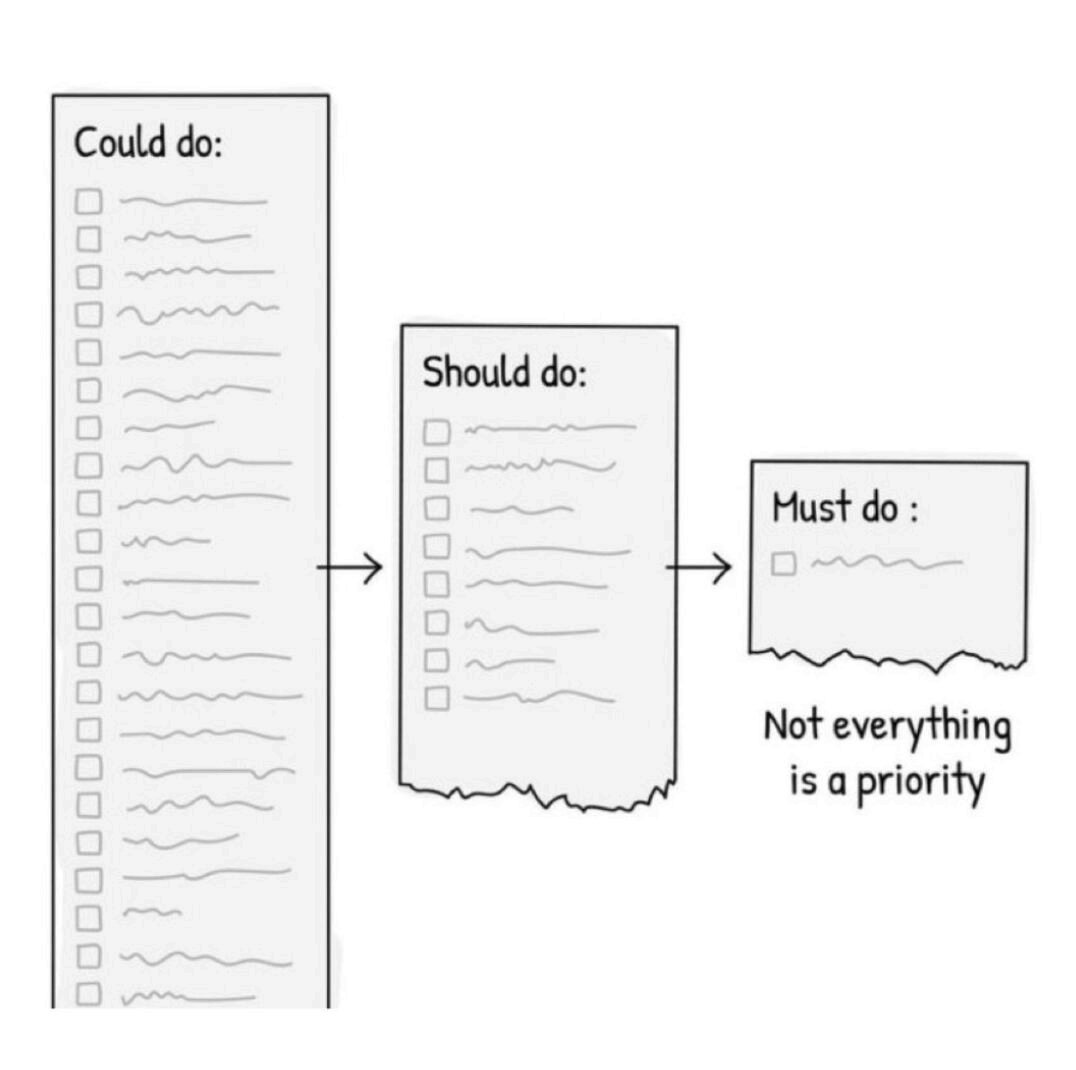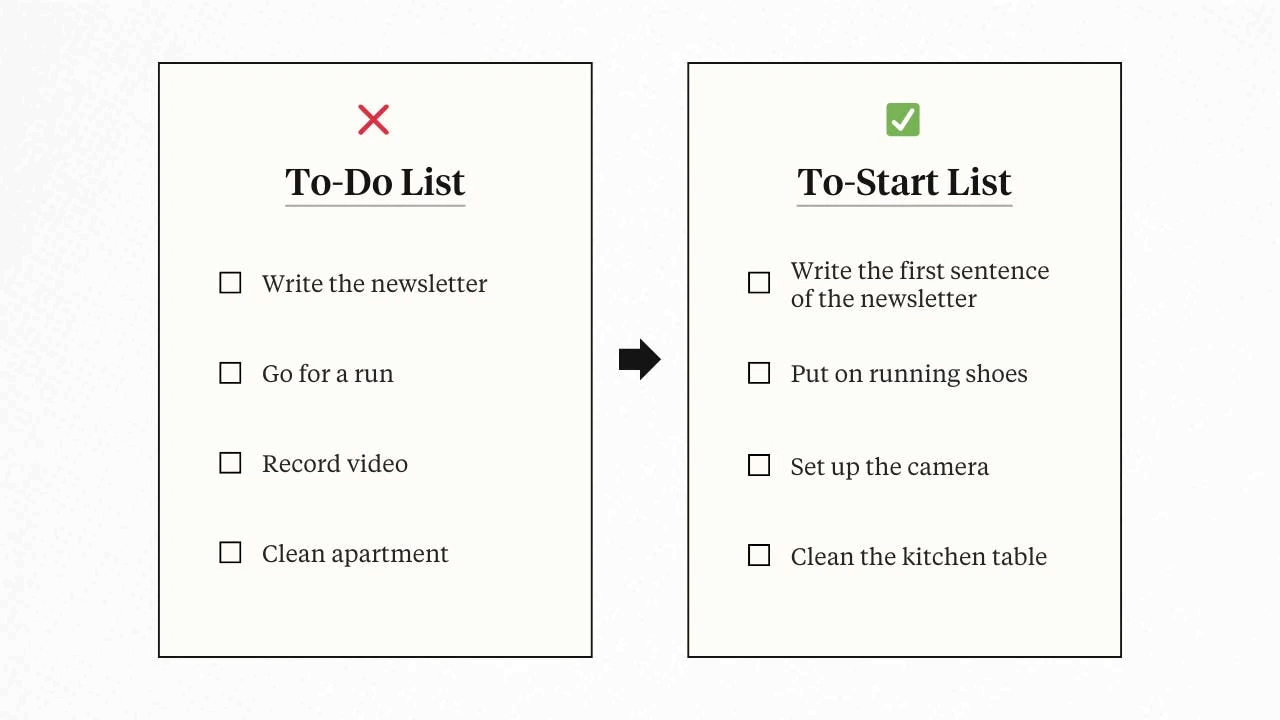Could-Do List → Should-Do List → Must-Do list

To-Do List → To-Start List

- Write the newsletter → Write the first sentence of the newsletter
- Go for a run → Put on running shoes
- Clean apartment → Clean the kitchen table
- Record video → Set up the camera
The “Open List” and The “Closed List” (“集中” & “分散” 原則)
- Dump all the tasks you need to do to the “Open List”
- Transfer some tasks from the “Open List” to the “Closed List,” which has a maximum of ten entries — it’s a way to stay focused on what truly matters.
封閉式清單 [@forsterItTomorrowOther2008]
“A closed list is a way of applying limits to our work in order to increase our efficiency.” ― Mark Forster, Do It Tomorrow and Other Secrets of Time Management
概念
封閉式清單是一種設限的待辦清單,與開放式清單相反。它不允許隨意新增工作事項,這種方法能有效防止無限制的工作堆積,有效控制工作量。
使用方法
- 前一天規劃:在前一天晚上列出明天需要完成的所有工作事項。
- 設置界線:在清單的最後一項工作下方畫一條橫線,以明確區分計劃內與計劃外的事項。
- 執行並專注:隔天按清單順序執行,盡量完成橫線上方的所有事項,避免臨時增加任務。
- 記錄突發事項:如果有新的工作插入,先完成清單上的任務,再處理新工作,並將其記錄在橫線下方 1。同時,任何非必要的分心行為(如閒聊、瀏覽購物網站)也需記錄,以幫助回顧與優化時間管理。
- Why?
- Many people seem to feel as if they start off each morning in a kind of “Productivity Debt”, which they must struggle to pay off through the day, in hopes of reaching a zero balance by the time evening comes.
- How?
- Start with a blank slate each day and gradually fill it with completed tasks. It’s a helpful reminder of what you’ve accomplished, no matter how small. This helps build momentum.
The “Stop-Doing” List [@collinsGoodGreatWhy2001]
- “To-Don’t List” or “Anti To-Do List”
- Via negativa is essentially the study of what not to do
Gamification: Make it Fun; Make a Game Plan
- To do lists = Anxiety inducing. (待辦清單 → 焦慮清單); Video game levels = Excitement inducing.
- Fun doesn’t have to be enjoyable. Treat play as a pathway to focus. You don’t have to enjoy play. Why? Because play can be a useful tool to hold our attention long enough to get the task done.
- How to make a task into play? How to add fun to a task?
- Enforcing constraint (such as time limits) creates a sense of urgency that helps to concentrate efforts
- Introducing variability encourages curiosity and engagement by exploring the uncertainties within a task
- The Broaden-and-Build Theory: Positive emotions broaden one’s awareness and encourage novel, exploratory thoughts and actions. Over time, this broadened behavioral repertoire builds useful skills and psychological resources.
Footnotes
-
或是背面。 ↩
[1]
Bogost I. Play Anything: The Pleasure of Limits, the Uses of Boredom, and the Secret of Games. New York, NY: Basic Books; 2016.
[2]
Abdaal A. Feel-Good Productivity: How To Do More Of What Matters To You. Celadon Books; 2024.